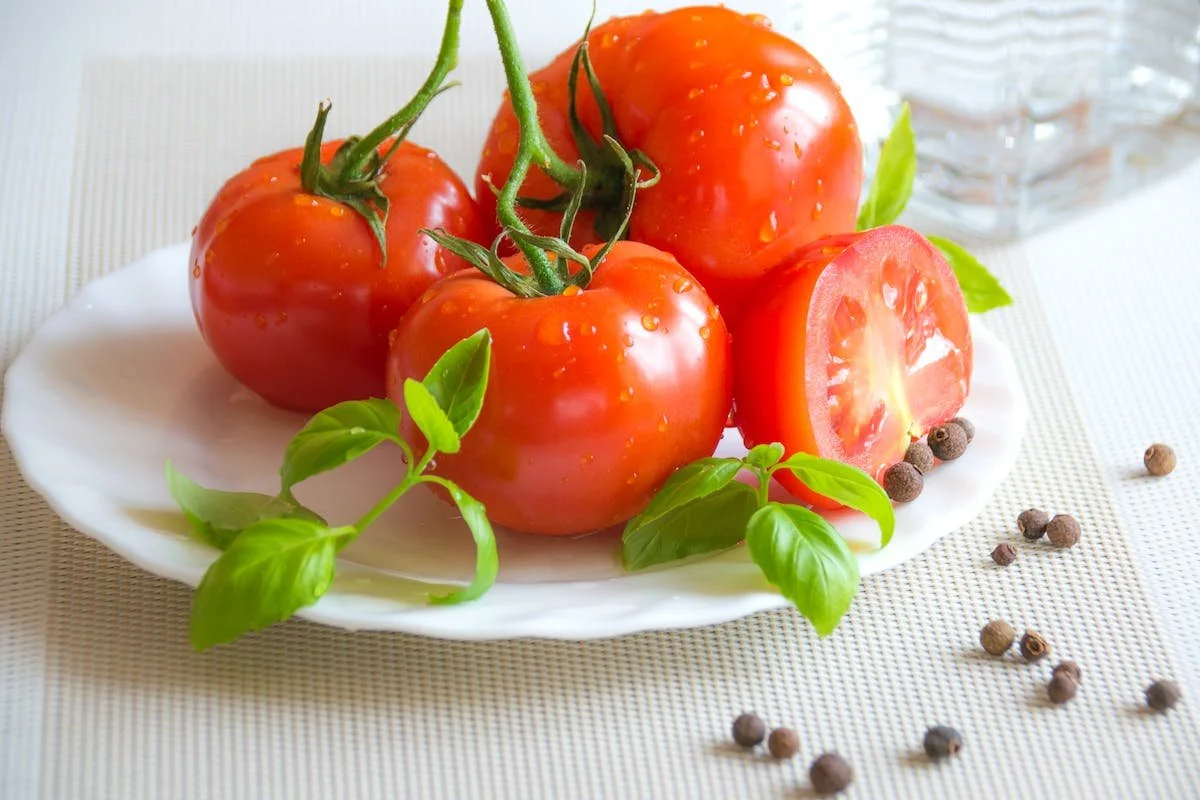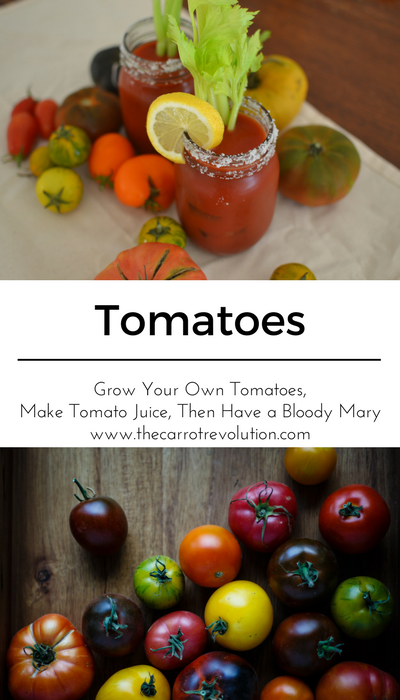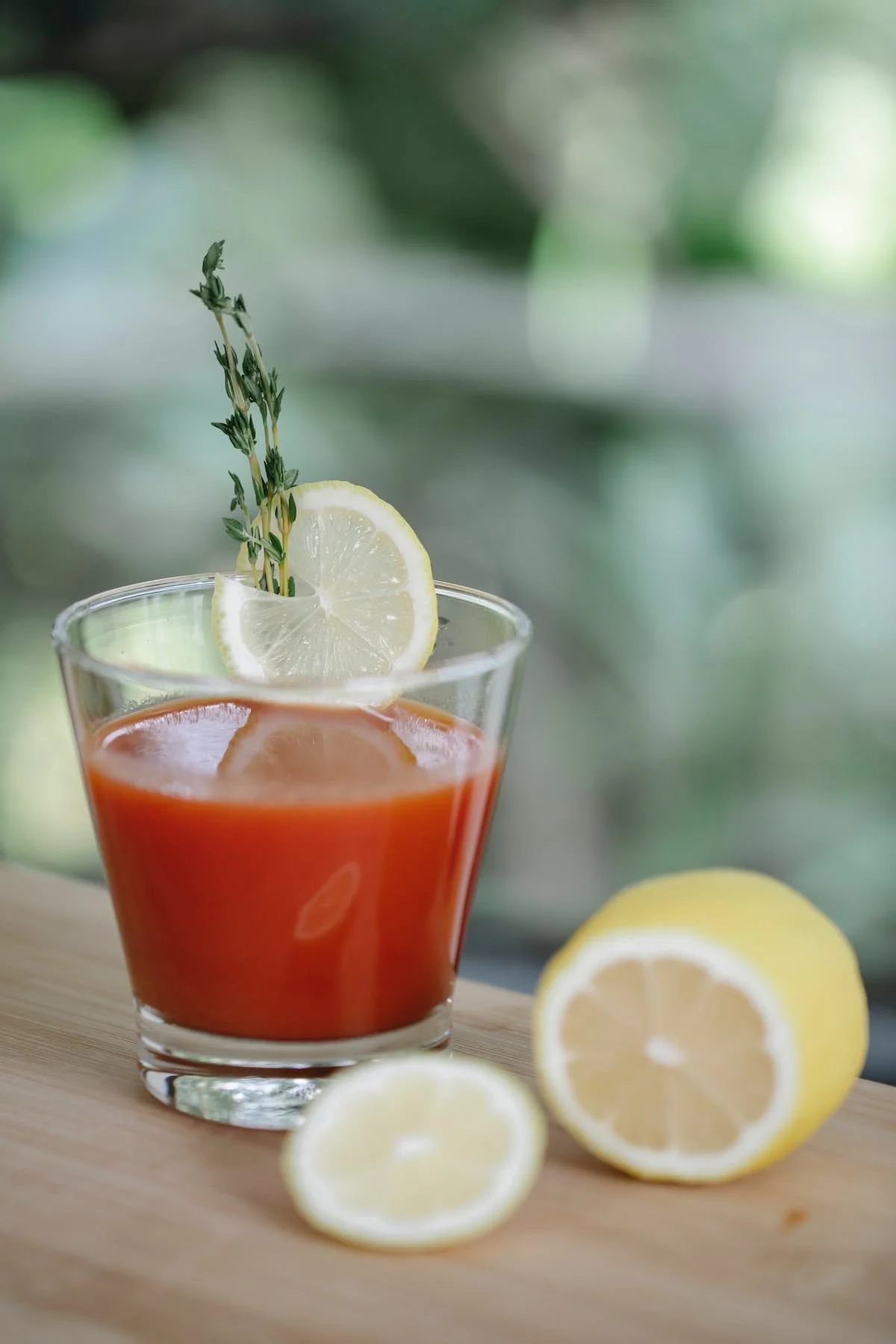From Vine to Beverage: How to Make Fresh Tomato Juice and Elevate Your Bloody Mary Game By Ecological Farming and Sustainability Expert, Rick Perillo
Every home gardener grows tomatoes for good reason. Stores often sell tomato varieties that ship well and look pristine with taste as an afterthought. They arrive at the store after a long journey in a refrigerated truck that turns their flesh mealy and their true taste undeveloped. A tomato from the garden however, has a firm texture and pops with flavor.
SOME TOMATO HISTORY
Tomato plants originated in western South America. Ancient plants produced small, yellow fruits. The Mayans domesticated the plant and bred it into the large, juicy fruit we enjoy today. By the 16th century European colonists spread the tomato throughout Europe, Asia, and North America. The tomato was slow to gain popularity outside of the New World in part because of rumors claiming it was poisonous.
The tomato has come a long way since its early slow acceptance. Americans eat 12 million tons of tomatoes a year and have put the tomato at the center of a Supreme Court decision to decide if it is a fruit or a vegetable. Buñol, Valencia holds an annual tomato fight where over 300,000 tomatoes are thrown. Regions around the world have developed unique varieties of tomatoes reflected in their names: San Marzano, Rostova and Oaxacan Jewel.
When you grow tomatoes you quickly learn you can only eat so many tomato salads before looking for alternative uses for your tomatoes. Keep reading to learn how to make tomato juice that can be canned or turned into the best Bloody Mary you will ever have.
HOW TO GROW TOMATOES
Planning
Home gardeners have between 10,000 and 25,000 (depending who you talk to) tomato varieties to consider. Start by choosing varieties you want to eat. Grow Romas for pasta sauces, cherry tomatoes for a sweet snack and beefsteaks for tomato salads. Next, choose varieties that do well in your climate. If you live in northern climates with a short season plant early ripening plants like Solar Flare and cherry tomato varieties. In southern climates with a long summer season you may be able to get a second round of cherry tomatoes planted mid-summer.
Tomatoes can be grown in containers with the benefit of being able to move the tomato throughout the day and season for maximum sunlight and quicker heating of soil. Containers should be at least 15 inches in diameter, have good drainage, and loose, nutrient rich soil. Plant breeders have cultivated varieties for containers with names like ‘Balcony’ and ‘Sweetheart of the Patio.’ Early ripening varieties also thrive in containers.
Prep the Soil
Select a site that receives at least 6 hours of sun a day. If you live in warmer southern climates tomatoes will benefit from some partial shade in the hot afternoons.
Work soil amendment or compost about 1 foot into the soil.
Planting and Watering
Plant tomatoes outdoors after the last frost or start them indoors 6-8 weeks before the last frost.
Tomatoes need about 3 feet between plants. A traditional Italian method is to interplant tomatoes with basil.
Gently pinch off 2 or 3 of the lowest branches and place the plant in the soil so that the lowest remaining branches are just above the soil level. This only works with tomatoes, do not use this method with any other plants!
Trellising tomatoes will save space as well as keep fruit off of the ground where slugs will enjoy it. Metal cages can be purchased for this purpose but many methods will work such as tying plants to a fence or making your own bamboo trellis.
Water after transplanting and keep soil continuously moist. Some gardeners reduce water as tomatoes begin to ripen claiming this increases sweetness of the fruit. A layer of mulch will help keep the soil moist.
Harvest
Harvest tomatoes when they have fully turned color and give slightly when pressed gently. Tomatoes that come off the branch before ripeness can be fully ripened indoors out of the sun. Store tomatoes in a cool place but never in the refrigerator. Frost will destroy any fruit on the plant. If frost is approaching and you have green tomatoes harvest all of the fruit and make chutney and fried green tomatoes.
HOW TO SPEAK THE LANGUAGE OF TOMATOES
Tomatoes are classified by many criteria. What do all of these words mean?
Growth Habit
Determinate
Tomato plants grow to about 3 feet, set fruit all at once, then begin to die. Celebrity is a determinate variety.
Indeterminate
Plants grow until frost or disease kills them. These plants are more common than determinate types and often taste better. Varieties include Brandywine and Black Prince.
Fruit Size
Cherry or Grape
These grape sized varieties are perfect for snacking on right off the vine. Cherry tomatoes are huge producers and their fruit is some of the sweetest. Sungold and black cherry are two popular cherry varieties.
Beefsteak
These are large tomatoes weighing 1 pound or more. These can be sliced like a steak and used on sandwiches, hamburgers or tomato salads. The aptly named Mortgage Lifter is large even for a beefsteak.
HOW TO MAKE TOMATO JUICE
Tomato Juice is a great way to use up the tomatoes you are growing. If you grew up on V8 juice you may be turned off by tomato juice. But, this is nothing like the salty ketchup taste of V8. The recipe below makes a basic tomato juice great for using as a Bloody Mary mix. If you are drinking it on its own feel free to mix in onion, celery and Tabasco.
Ingredients
3 pounds very ripe garden tomatoes, cored and roughly chopped. Use any tomatoes you have. Heirloom tomatoes may not make the rich red color associated with tomato juice but the taste will be better than anything from the store.
2 tbsp. sugar (This balances the acidity, adjust according to taste)
1 tsp. salt
Pinch black pepper
Procedure
Place all ingredients in a large non-reactive pot (use stainless steel, not aluminum) and cook at medium heat until mixture begins to boil.
Reduce heat to a simmer and cook for 15 minutes more.
Pass mixture through a sieve or a chinoise to remove the skins and seeds. If you do not have either of these let the mixture cool and pass through cheesecloth.
Your juice can be covered and stored in the fridge for 1 week.
If Canning Tomato Juice for Shelf Storage
Transfer tomato juice into sterile pint jars, leaving about ½” of headspace.
Cover with lids and bands.
Process in a boiling water bath for 35 minutes.
Can be stored in a cool dry location for up to one year.
HOW TO MAKE A CLASSIC BLOODY MARY
I remember my first Bloody Mary; I was backpacking in Barcelona where we found V8 juice, low-shelf vodka and a hotel room even cheaper than the vodka. We drank them until sick. I didn’t have another one for five years at which point I realized how a proper one tasted, like fresh vegetables with a kick. Use this recipe with homemade tomato juice from your garden; breakfast of champions.
Ingredients
4 oz. tomato juice (see above recipe)
2 oz. vodka
1 Lime wedge
1 Lemon wedge
2 tsp. Tabasco
2 tsp. horseradish
2 dashes Worcestershire sauce
Pinch ground black pepper
Pinch smoked paprika
Celery or sea salt for the rim of glass
Procedure
Pour salt onto a small plate.
Rub the lemon wedge across the lip of a pint glass or mason jar.
Dip the top of the glass in the salt to coat the lip with salt.
Fill the glass with ice, squeeze the lemon and lime into the glass.
Add the remaining ingredients to the glass and stir well.
Garnish with a celery stalk, olives, lime or just about anything else that looks sexy.
Bio
Rick Perillo has been exploring sustainability and ecological farming for 15 years. He has taught sustainable gardening to everyone from 2 to 90-year-olds and currently teaches gardening at MUSE School Calabasas. You can read more of his work at www.thecarrotrevolution.com











